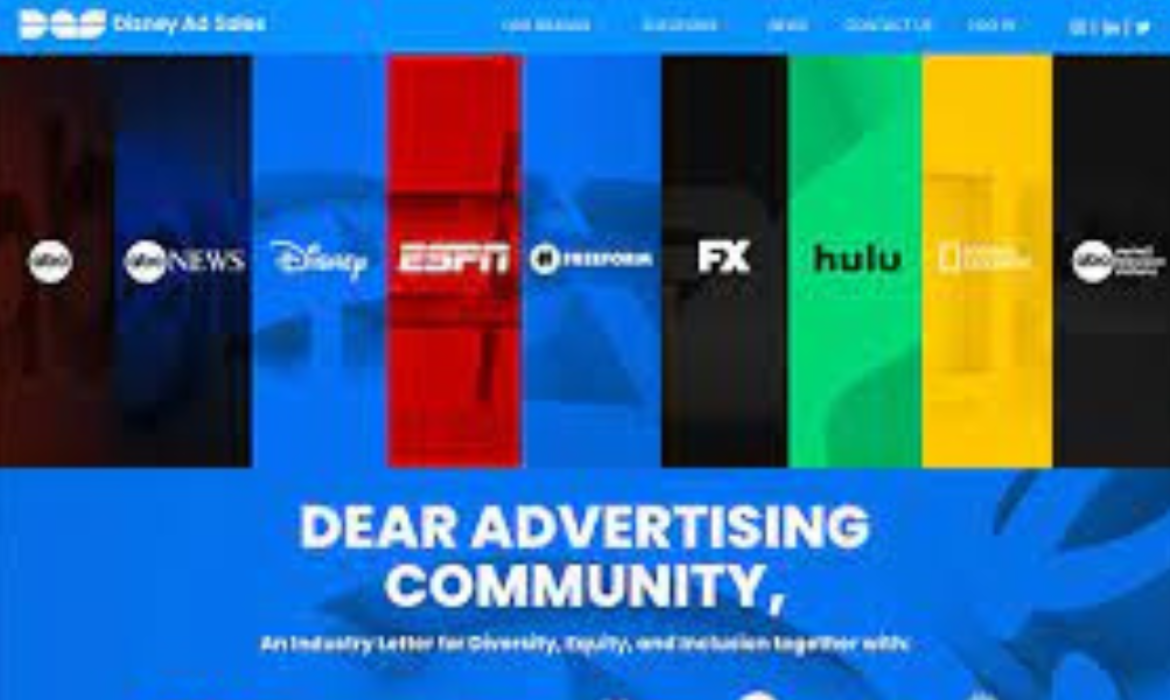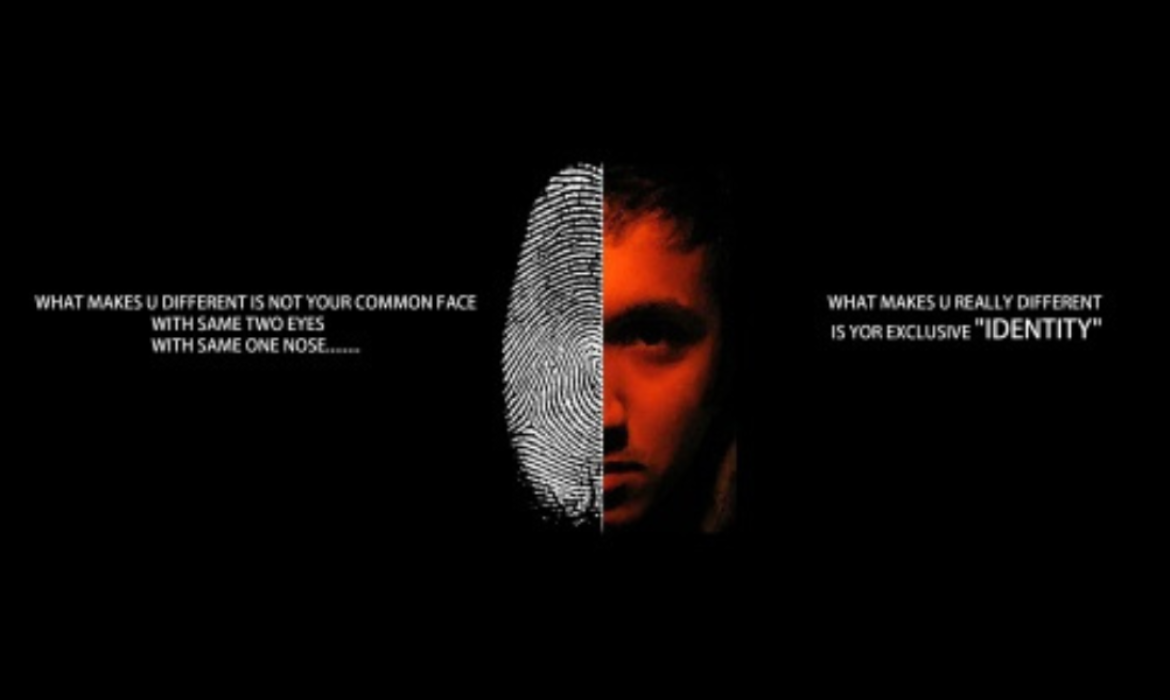Disney Launches Clean Room For Marketers’ First-Party Data Needs
With the help of first-party data service providers Snowflake, Habu, and InfoSum, the Disney Advertising Sales department has officially created its own data clean room. A ‘ clean room’ is usually leveraged to integrate client proprietary consumer information with other industry data to improve performance. Clean rooms are used to safeguard a company’s data as well as the privacy of its customers.
What makes clean room services appealing to broadcasters is that programmers have dependable linkages to viewers who are signed into OTT services or have monthly subscriptions.
Disney’s announcement is interesting in that it does not include large cloud marketing businesses like Google and AWS, instead of focusing on data and identity vendors who operate across channels.
Interesting Read: Group Nine Launches First-Party Product In Wake Of Cookie Apocalypse!
Disney Clean Room: What’s In It For Marketers?
The primary idea behind the ‘clean room’ is to help marketers with their first-party data. Through this move, marketers will be able to collaborate with 1,000 first-party sectors, according to Disney.
Furthermore, marketers can use clean rooms to match their first-party data with other industry data in a secure environment. Marketers may match and instigate their needs when it comes to buyer behavior, household features, and psychographics using its first-party segments.
That’s What They Said!
Lisa Valentino, Disney ad sales EVP gave an official statement saying –
We are building data solutions for our clients and marketers anchored in Disney Select’s unrivaled audience-based capabilities. It was important for our clean room offering to be cloud agnostic to provide brands with scale and variation
Drivetime and Omnicom Media Group (OMG) were the first clients to use Disney’s clean room for beta testing. Habu, InfoSum, and Snowflake are also among the data firms taking part in the test.
OMG chief investment officer Geoff Calabrese, said –
This partnership with Disney is about setting the standard for the future of media accountability, and a more accurate understanding of consumer engagement and outcomes – it’s where we need to go as an industry, and OMG is proud to work with Disney in leading the way forward
Also Read: The Ultimate A-Z Glossary Of Digital Advertising!
LinkedIn Rolls Out New Features – All Marketers Assemble!
In today’s changing world of work, LinkedIn has released new platform capabilities that will enable marketers to quickly increase and deepen their connection with their audience. These new additions to the LinkedIn Marketing Solutions (LMS) portfolio will allow marketers to develop communities through lengthy content, expand their reach with Live Events, and streamline how they track progress toward their brand-building objectives.
So, what are these features that are creating a buzz? Let’s check them out below.
LinkedIn New Features: A Marketer’s Delight!
LinkedIn wants to assist its members to grow their networks, and features enabling native long-form content, virtual events, and data-driven optimization tools will encourage them to interact with their audience and optimize their reach. Let’s have a look at these features –
1. Article For Pages
Informative and trustworthy content is still a powerful approach to engage people and establish a brand image for thinking leadership. The problem is that attracting visitors to a typical corporate blog is becoming increasingly challenging. The solution? – Articles for Pages.
This functionality provides the user easy access because it’s only a click on the social network, and there’s a better chance they’ll find it, which means there’s a chance to engage once the audience arrives.
LinkedIn members have had the option to write and publish long-form articles for a long time – so, it is logical to ask –what novelty does this feature add to the table?
Well, before this feature, businesses have been constrained to character limitations for organic postings in the feed. With Article For Pages, users can benefit in a lot of ways such as:
- Creating and disseminating high-quality information, including rich media, links, pull quotes, and more
- Obtaining extensive audience insights in order to understand the demographics of individuals who read and engage with the material
- In the comments area, stimulating visible and welcoming dialogues with the community while replicating the engagement components of a social post
Interesting Read: Ways To Improve Your LinkedIn Marketing Strategy
2. Scheduled LinkedIn Live & LinkedIn Events
The much-anticipated “Scheduled LinkedIn Live” and “LinkedIn Events” have finally arrived, allowing LinkedIn to better collaborate for optimum reach and engagement.
LinkedIn Events is a one-stop-shop that combines the reach and engagement of LinkedIn’s original live-streaming platform with the planning and targeting that allows users to –
- Invest in a targeted audience by sponsoring your live stream in advance
- During and after the performance, gather views on your public Live Event post from anybody on LinkedIn, whether they’ve clicked “Attend” or not
- For optimal circulation and value, broadcast the replay of your Live Event content, effortlessly
As more growth engagement transfers to the digital domain, live events are quickly becoming a bedrock of community-building. LinkedIn aims to make it as simple as possible for you and other interested guests to connect at a larger scale. This is where ‘LinkedIn Live’ comes in. Through this feature, users with fewer followers can also access Live. Furthermore, once a Page is authorized, all Page Admins can make it live.
Interesting Read: TikTok Partners With Double Verify For Ad Measurement And Brand Safety
3. Brand Lift Testing And Reach Optimization
LinkedIn has added features to assist members to achieve and measure their brand-building objectives. One of these features is ‘ Brand Lift Testing’ – which enables people to assess the impact of LinkedIn Advertisements on their brand by first establishing a baseline of brand perception and then comparing the brand impact of those ads to important indicators.
Another brilliant feature for brands is – ‘ Reach Optimization’. With this functionality, users can simply increase their brand’s exposure to new and relevant audiences by optimizing for the number of unique member accounts that are displayed advertising.
That’s What He Said!
Sachin Sharma, Director, LinkedIn Marketing Solutions for India, said-
At LinkedIn, we are heavily inspired by the efforts of marketers who continue to build communities despite the many volatilities of today’s day and age. To facilitate their efforts, we’re adding new features to the LMS portfolio that can help them reach more of their targeted audiences, and grow their brand community more seamlessly — all while measuring impact in easier ways
Also Read: Google Is Reportedly Planning to Index Instagram and TikTok Videos
Let’s Understand The Vendor Landscape Of Identity Resolution Platforms.
What is the Identity Resolution Platform?
Present-day, marketers are facing immense challenges to keep a record of their customers. Due to the increase in the number of smart devices per user, it’s getting hard to track users activity. These days each user or consumer is using at least two to three smart devices for their usage. These smart devices include mobile phones, smart television, laptop, desktop, smartwatch etc.
To make sure the user gets the best user experience and user interface, marketers must keep a track of its users’ habits and path on the internet. Marketers and brands use Identity Resolution Platforms to resolve this issue.
These platforms keep a track of user habits with the help of their IP, MAC, phone number, email, cookies etc. Therefore, with the help of these platforms marketers and brands can provide better-personalized services to their customers.
Vendors of Identity Platforms provide services to a wide range of organizations. The consumer of their services can range from a giant(Pvt. Ltd.) company to budding Startups.
Business Identity resolution platform market is filled with large data-firms, credit reporting companies and many pure-play platforms. Identity resolution platform skill in the market community is provided by coincidence, and not by choice or a stand-alone feature.
The biggest boom in the Identity resolution platform came between the years 2017-2018. During these times, four vendors collected an approximate Of $40 million with 6 sponsorships.
However, in 2019 and 2020(first-quarter), vendors were gearing-up, by adding new features and integrating those features to their Identity resolution platform capabilities. Therefore, the financial graph was low as compared to 2017-2018.

Image credit – martechtoday.
However, LiveRamp, an identity resolution platform, in 2019 was growing fast and doing Mergers and acquisitions. It purchased an authorization administration platform “Faktor” in the month of May. However, LiveRamp never disclosed the purchase amount
In the month of June, it acquired another firm “Data Plus Math”. Data Plus Math is a T.V promotion calculation firm. LiveRamp paid $150 million for the purchase of “Data plus Math”.
Dentsu Aegis Network acquired 4Cite Marketing in January 2020. 4Cite Marketing is a technology developer-centric to the identity of people.

Image credit -martechtoday.
Experian, Oracle and LiveRamp, all public-owned companies are giants in the field of Identity resolution. However, Merkle, Valassis, Neustar and Acxiom are either owned by worldwide agencies or by private equity enterprise.
There are private owned start-ups related to pure-play identity resolution which are using venture capital stakes to enhance their marketing platform. These companies include FullContact, SmarterHQ, Signal, Throtle, and Infutor. They are small in staffing and structure. They use this fund to further enhance their staffing and do R&Ds.

Image credit – martechtoday.
Lotame Introduces Cookie Free Data Technology For Publishers and Marketers
Lotame, the world’s leading unstacked data solutions company is looking to help publishers, marketers, media, and agencies to leverage their first-, second-, and third-party data to create and analyze audience segments with a new suite of data enrichment products called ‘Lotame Panorama’.
The suite will help users find customers, increase engagement and growth revenue across the cookie challenged web browsers like Safari, Chrome and Firefox, mobile devices, and OTT environments.
Jason Downie, chief revenue officer, Lotame, said,
“First-party data is a valuable asset, but unfortunately it doesn’t provide the scale marketers need. Bridging together customers’ online and offline lives has been a persistent industry dilemma that was made even more complicated with recent browser changes. To solve for this, we developed Panorama which enables a fuller view of activity that is actionable across a connected ecosystem, even in cookie-challenged or first-party-cookie-only environments.”
Unwrapping data enrichment services
Panorama offers two solutions, one for marketers and agencies, the other for publishers and media companies. Lotame has unveiled three data enrichment services powered by Cartographer, Lotame’s ID graph technology.
- Panorama Insights: It offers a varied set of curated data tools and analysis for better storytelling, prospecting, segmentation, and modeling without cookies needed. It connects users’ first-party data to second and third-party data across the web, mobile, and OTT devices from 250+ online and offline data providers.
- Panorama Buyer: It ensures that media buyers connect customers’ attributes across first-, second- and third-party data to create an addressable audience in the cookie-challenged environment.
- Panorama Seller: This allows publishers to monetize their inventory across the web, mobile, and OTT through direct or programmatic advertising. It also enables publishers to set exact CPM’s in cookie challenged environments.
Also Read: Prebid Server Aims To Ease Header Bidding For Programmatic Advertisers
Panorama launches as publishers and others that rely on extensive data sets may have to struggle to find the scale they need. Lotame has appointed Ruby Brenden as head of data products to drive Panorama Insights forward. Brendan said,
“I have spent the last decade helping innovative marketing companies launch products. I am excited to launch Panorama, a solution that is exactly what the industry needs as third-party cookies start fading out. Insights will give marketers and agencies a single, trusted place to uncover relevant data stories and build smarter, addressable audiences, which means better advertising for consumers.”
Customers Signing for new Lotame Panorama products
Companies like Procter & Gamble and IPG’s Cadreon have already signed up for the new Lotame Panorama products.
Clients agree and testify,
Paras Mehta, Business Head – India, at Cadreon said,
“Understanding customer attributes and behaviors is key to our data-driven strategy when working with advertisers. Data enrichment using high-quality second and third-party data like Lotame’s enables us to draw insights we wouldn’t have access to with first-party data alone. We look forward to leveraging more of Lotame’s data solutions to deliver the exceptional service and results Cadreon is known for.”
Tim Hung, marketing director and lead of media, P&G Hong Kong & Taiwan said,
“Improving the lives of consumers around the world isn’t just our mission, but our daily practice..This requires getting to know those customers through the use of high-quality second and third-party data vetted and verified by Lotame. As cookie blocking becomes more prevalent, data enrichment solutions like Panorama will become even more important for global brands like P&G to understand customers and engage with them in meaningful and respectful ways everywhere they are.”
Partners at launch include Domo amongst others. Jeff Skousen, GM, North American Corp/Ent Sales, at Domo said “We’re excited to partner with Lotame to power Panorama Insights.” He further added,
“By dynamically integrating data and delivering live visualizations, Lotame is providing brands bespoke audience real-time insights in a digestible, actionable format to improve analysis, prospecting, segmentation, and data modeling.”
Identity Resolution Platforms Helps Marketers Tackle Consumer Data Crisis.
Every new electronic gadget in the market is now getting more user interactive helping users to personalize as per their needs and choices. Therefore, with the help of Identity Resolution Platforms, marketers can connect their customers with the things they need!
Today every customer is using multiple smart devices in their daily life. Maintaining a collection of data usage for each device is elusive. This is where Identity Resolution Platforms come into the picture. They accumulate consumers based on their identity. Likely, based on IP, they make sure that the marketers can approach them in a much efficient manner.
This not only helps the marketers but also help the government to make sure the compliance is followed. For example, helping in compliance with the privacy of consumers by the European Union’s General Data Protection Regulation (GDPR) and California Consumer Privacy Act (CCPA).
According to an Annual Internet Report released by CISCO, the number of smart devices connected to a single IP is going to increase tremendously. The number will be three times more compared to the global population by 2023. These include devices like Smart TV, speakers, wearable, and other home management solutions. By 2023, the consumer share of the total market will increase approximately 75%.
Similarly, consumer demand for much more personalized and interactive devices is increasing. Therefore, the whole market can’t be evaluated in a single parameter. This requires a much wider approach to the market.
Today, consumers are sharp-witted, they grant permissions to applications and brands of their choice. According to a survey made by Forrester, nearly Three-quarter of people wants the brands and application to know in advance why they are making a call.
Situations like these make marketers thrive for goal orientation and perfection. They must familiarize themselves with consumers’ online and offline behavior and even know who the customer is?
Winterberry Group surveyed half of the total marketers. According to their survey, audience matching and identification on cross-platform is marketers’ highest priority. Every time a customer interacts with a brand he is assigned with a different identity(Key) element. This identity can be an IP, email, or a physical address like MAC, mobile phone number, a digital tag, or a cookie.
So many customer identities is a challenge faced by marketers. They struggle To keep a track of their customers. Nearly, 71% of marketers acknowledged that they lost the trail of their consumers with time. They were unsuccessful in maintaining a record of their online and offline customers. Thus, marketing campaigns struggle and fail to provide accurate data for their customer.

Image credit – martechtoday.com
The identity resolution market projected to cross $2.6 billion by 2022.
Several platforms maintain databases for households or individuals’ data. This database is based on the user’s first-second-or third party data. These data sources help marketing companies to overcome the problem of consumer tracking and record keeping. US marketing is anticipated to disburse $2.6 billion on the identity resolution project by the year 2022. This will be a 122% increase in the time frame of four years. The money will be consumed potentially so that the customer gets the best experience. whereas marketing campaigns will be conducted successfully, keeping the choices of their customer in focus.
According to Forrester, two-third of marketers accepted that with identity resolution policies in place, they have started seeing strong returns in their investments. They also accepted that with Identity Resolution Platforms their customer data is secure, and profiles are easily traceable.

Image credits – martechtoday.com
With an emerging market, many brands are applying Identity resolution strategies to their business. However, businesses are still facing significant challenges in their success models, maybe because consumer details are dispersed throughout the business. Many of it often resides in a vault that is jamming marketers’ potential to establish and encourage relationships.
A consumer might use variable identifiers to look-up something on one gadget (i.e., login name or desktop cookie), call on different (i.e., mobile), and then purchase something from the supply (i.e., credit card or loyalty ID). All of these identifiers will be stored in a different vault with the contrasting collection and parallel requirements.
Marketers also lose data, these likely include location, and third-party cookies. Application developers and Google provide security so that these data can’t be traced or stored.
Location Sciences is a company that helps in verifying the location data. They have estimated that since September 2019, with the release of iOS 13 on iPhone it is impossible to track users’ locations when mobiles are inactive.
To resolve this issue for marketers Identity Resolution Platforms has developed solutions like Merkle’s Merkury. This can help brands to stock data as first-party details in graph format.
However, retailers create graphs from the second-party data. They receive these data based on their agreements on data-sharing.
One such vendor is Neustar, it is a second-party data marketplace. It uses first-party-data from different brands employing a common, anonymous identity valuable. Engaging businesses can create plans, trigger, and compute customary audience inventory to either pick or censor customers across addressable media.
Oracle Data Cloud Cooperative is a similar example that collects data from more than 1500 retails partners. In return, these retail partners get a model that can predict the best approach for the audience. It can even help in guessing the next best thing that can be pitched to the user.
Users providing misinformation and Strict government policies increase the challenges for marketers.
As people are getting smarter they have also started to understand the data linking techniques of marketers. Customers sometimes themselves enter a piece of wrong information, for example, typing their name incorrectly! just to make sure that they can’t be traced by that data. This makes the job of marketers even dreadful.
Winterberry Group and the Internet Advertising Bureau (IAB) Data Center of Excellence in a joint report stated that marketers have complained, that due to strict restrictions on user data access and re-usage policies their jobs have become relatively difficult. Due to the increasing pressure of government in the field of user data privacy, and the implementation & introduction of new reforms in data privacy laws, they can’t access value data with ease.
The compliance rate of GDPR for marketers range from 8-42%. GDPR was implied on marketers in May 2018. In January 2020, CCPA became effective and the brands that won’t comply will be facing fines.






